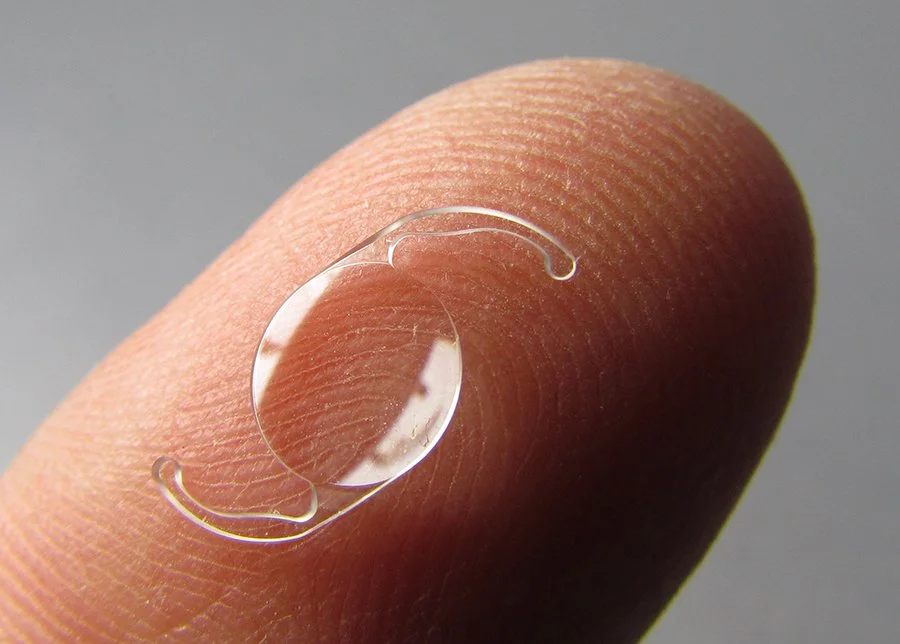What are the Different Types of Lenses Used for Cataract Surgery?

Cataract Surgery is a serious operation that requires the highest skill and attention from the eye surgeon who is performing the procedure. If you are about to undergo cataract surgery, SightMD is here to answer some questions you will likely have about this operation. The more informed you are, the easier and safer you’ll feel before your cataract surgery procedure.
What are My Intraocular Lens Options?
Intraocular lenses (IOLs) are placed into the eye at the time of surgery after the cloudy cataract lens is removed. Intraocular lenses can be broadly categorized into 3 types: monocular, toric, and presbyopia correcting.
Monocular Lenses: Provide one point of focus. Usually that point of focus is for distance and glasses correction will be necessary to provide focus for any intermediate range or near activities. Often prescription glasses are also necessary for distance to correct for other aberrations of the eye such as astigmatism.
Toric IOLs: Provide a single point of focus, however, they also correct for astigmatism. Not everyone has enough astigmatism to warrant a toric IOL, however, many do and for these patients a toric IOL is highly recommended. Astigmatism is a distortion to the shape of the eye that causes blur at all distances.
Presbyopia Correcting IOLs: Provide an even further reduced dependence on glasses by using advanced technology to enhance vision at the intermediate and even near ranges. Presbyopia is the natural loss of accommodation, or ability to focus at near, that occurs to everyone in their mid-40’s.
Which lens is right for me?
The type of intraocular lens (IOL) you should choose is based on your eye care needs. There is no specific IOL that is the best option for every patient and not every patient is a candidate for these types of IOLs. Each one has its own advantages and limitations. A thorough eye exam, specialized testing, and discussion with the doctor is necessary to determine which option is best for you. If you want to be able to see simply from one distance, a monofocal lens would suit you. If you have been diagnosed with astigmatism, however, the toric lens would be your best choice. It would be best to discuss with your eye care doctor or surgeon to determine which lens option would be best for your cataract surgery.
Are all IOLs covered by insurance?
Unfortunately, not every IOL is covered by insurance. A premium lens for cataract surgery is a term for any IOL that is not covered by insurance. This would include toric and presbyopia correcting IOLs. Presbyopia correcting IOLs can be further subdivided into different categories based on the type of technology used to gain an enhanced range of vision: multifocal, extended depth of focus, accommodating, etc. The monofocal lens, however, is covered by Medicare and most other insurance plans.
How long do cataract lenses last?
IOLs placed at the time of surgery will typically last for the lifetime of the patient. This is the lens that you will see with for the rest of your life. Therefore it is worth careful consideration and discussion with your doctor regarding which lens is best for you given your lifestyle, goals, and desires for your vision after surgery and to determine what lens is best suited to the unique anatomy of your eye.
What is a secondary cataract?
A very common occurrence after surgery is build up of scar tissue around the IOL or “secondary cataract.” Scar tissue formation occurs with any surgery, cataract surgery included. When the scar tissue is on the outside part of the lens it is usually not of any visual significance and is in fact what helps your lens stay in place. Over time, the scar tissue may grow over the center area of the lens which you look through. This can affect vision by causing haziness and cloudiness. If this is the case, it can be easily remedied with a laser procedure that only takes a few minutes to perform and is painless. Once the scar tissue is removed by the laser, it does not come back.
Is the surgery performed differently based on the type of lens you choose?
The operation of cataract surgery is the same, regardless of the type of lens that you and your eye doctor or surgeon decide upon. The difference is in the procedure. A traditional procedure requires the use of a thin blade to remove the cataract and place the IOL. (Laser-assisted surgery does not accept insurance for cataracts.)
Do cataract lenses ever need to be replaced?
This would be an extremely rare occurrence. Often due to trauma or certain medical conditions that can make the support structure of the IOL weak, the IOL can become dislocated. In these cases special techniques can be used to try and recenter the IOL or the IOL may need to be removed and replaced. Another rare scenario is that the advanced optics of presbyopia correcting IOLs may not be well tolerated by a patient and they may be frustrated by a reduced quality of vision or glare or halos that can be seen around lights. In these cases the IOL can be removed and exchanged for another type of IOL. Again the need to have any of these procedures is extremely rare, probably less than 1% of cases.
As you can see, there is a lot of information to learn and consider before deciding if, when, and how you go about pursuing cataract surgery to help your vision. That’s why we can’t emphasize enough the importance of consulting with your eye care professional to help narrow down the best possible options for you. Contact SightMD today to discuss your options and see if you are a candidate for cataract surgery.


